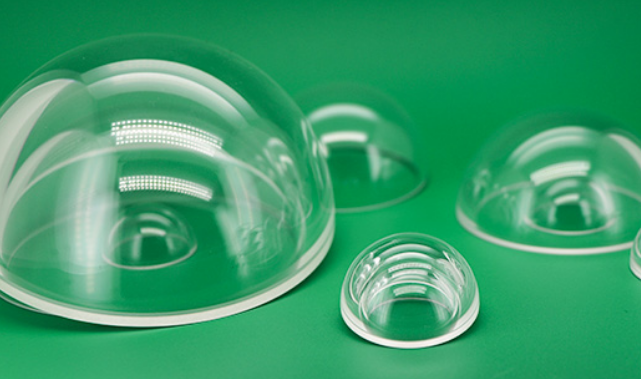Aluminum Optical Coating Mirrors Vs. Silver Coating Mirrors
Jun. 11, 2024
Determining Optical Mirror Performance
Selecting the right coating can significantly impact the emissivity and reflectivity of an optical mirror. When choosing a coating, it's crucial to ensure it suits the intended application. Understanding how different metal finishes affect the mirror's performance is essential. Two key aspects to consider are reflectivity, which measures how much light the mirror reflects, and emissivity, which refers to the energy radiated from its surface.
Reflectivity and emissivity have an inverse relationship. This means that as emissivity increases, reflectivity decreases. If a coated optical mirror tarnishes, oxidizes, or has a rough surface, its emissivity can rise, leading to decreased reflectivity.
Various coatings are employed to enhance the reflective properties of optical systems. The number and thickness of coating layers directly influence the interference rate they provide. Proper placement of these coatings is crucial. Correct application allows light transmissions to combine, resulting in constructive interference and increased amplitude. However, incorrect application, such as applying a coating at an unintended incident angle, can cause destructive interference, rendering the coating ineffective.
Now, let's delve into the beneficial properties of aluminum and silver coatings, why they are commonly used for coating optical mirrors, and which industries have successfully applied each.
Understanding Aluminum Optical Coating Mirrors
Characteristics
Aluminum optical coating mirrors are created by depositing a thin layer of aluminum onto a substrate material, typically glass or other optical materials. The aluminum coating is highly reflective across a broad spectrum of wavelengths, making it suitable for various applications in optics and photonics.
As a resource that can be found throughout the globe, the properties of aluminum have made it one of the most versatile non-ferrous metals that can be used in a variety of applications. Though in pure form it can be weak, chemical treating and alloying processes drastically increase its strength. These increased mechanical properties have made it a valuable resource throughout various applications in industries including aerospace, medicine, optics and defense.
Applications
Aluminum coated mirrors find applications in a wide range of optical systems, including:
- Telescopes: Aluminum mirrors are commonly used in astronomical telescopes to gather and focus light from distant celestial objects.
- Laser Systems: These mirrors are employed in laser systems for directing and reflecting laser beams with high precision.
- Photonic Devices: Aluminum mirrors are integral components of photonic devices such as optical switches, interferometers, and spectrometers.
Advantages
1. High Reflectivity: Aluminum coating mirrors offer excellent reflectivity, ensuring efficient light transmission and minimal loss.
2. Broadband Performance: These mirrors exhibit high reflectivity across a wide range of wavelengths, making them versatile for use in various optical systems.
3. Durable and Long-lasting: Aluminum coatings are durable and resistant to environmental factors, ensuring long-term performance and reliability.
Understanding Silver Coating Mirrors
Characteristics
Silver coating mirrors are created by depositing a thin layer of silver onto a substrate material. Silver is one of the most reflective metals, particularly in the visible spectrum of light. Silver mirrors offer exceptional reflectivity but are susceptible to oxidation and degradation over time.
Compared to other plated metals, silver has the most applications and is found throughout nearly every common industry. Classified as a noble metal, silver possesses many inherent benefits that make it a versatile plating material. For years, the process of silvering was applied to coat the surface of glass to create mirrors. Silver coatings are ideal for observing all wavelengths of light, offering high reflectivity and low emissivity that is especially useful for an infrared application.
Applications
Silver coating mirrors are utilized in a range of optical applications, including:
- Microscopy: Silver mirrors are commonly used in microscopy systems for directing and reflecting light to magnify specimens and observe microscopic details.
- Optical Instruments: These mirrors find applications in optical instruments such as cameras, projectors, and optical sensors.
- Decorative Mirrors: Silver-coated mirrors are also used in decorative applications, such as mirrors for interior design and architectural purposes.
Advantages
1. High Reflectivity: Silver coating mirrors exhibit exceptionally high reflectivity, particularly in the visible spectrum, making them ideal for applications where maximum light reflection is required.
2. Cost-Effective: Silver mirrors are relatively cost-effective compared to other coating options, making them an attractive choice for budget-conscious projects.
3. Wide Range of Applications: Silver mirrors are versatile and find applications across various industries, from scientific research to consumer products.
Comparison: Aluminum vs. Silver Coating Mirrors
Reflectivity
While both aluminum and silver coating mirrors offer high reflectivity, silver mirrors tend to have slightly higher reflectivity in the visible spectrum. However, aluminum mirrors exhibit better performance in the ultraviolet and infrared regions.
Durability
Aluminum coating mirrors are more durable and resistant to oxidation compared to silver mirrors, making them suitable for long-term use in demanding environments.
Cost
Silver coating mirrors are generally more cost-effective compared to aluminum mirrors, making them a preferred choice for budget-conscious projects.
Choosing the Right Coating for Your Application
The choice between aluminum and silver coating mirrors depends on factors such as:
- Specific Application: Consider the wavelength range and performance requirements of your optical system.
- Budget: Evaluate the cost-effectiveness of each coating option based on your project budget.
- Environmental Factors: Assess the operating conditions and environmental factors that may affect the durability and performance of the mirrors.
Conclusion
Both aluminum optical coating mirrors and silver coating mirrors offer high reflectivity and versatility for a wide range of optical applications. Understanding the differences between these coatings is crucial for selecting the right mirror for your specific needs. Whether you prioritize durability, cost-effectiveness, or maximum reflectivity, there is a coating option that meets your requirements.
For more information or to find a reliable supplier of optical coating mirrors, contact us today.




















